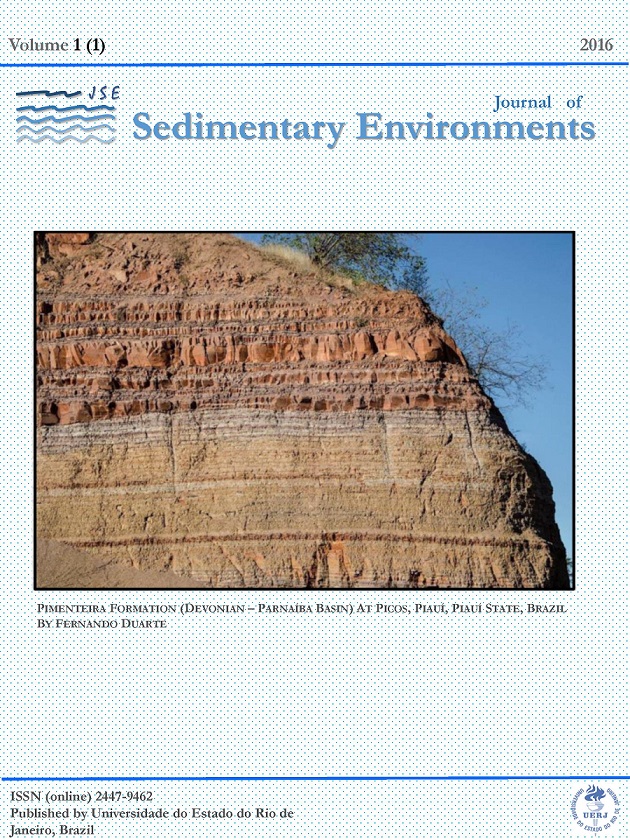NEW FOSSIL RECORD OF BUFONIDAE (AMPHIBIA, ANURA) IN THE LATE PLEISTOCENE-EARLY HOLOCENE OF NORTHEASTERN BRAZIL AND ITS PALEOENVIRONMENTAL SIGNIFICANCE
DOI:
https://doi.org/10.12957/jse.2016.21507Keywords:
Anura, Quaternary, tank deposit, paleoenvironmentAbstract
We report the first occurrence of anurans in the Quaternary fossil record of Rio Grande do Norte State. The specimen UERN PV-50 was assigned to the bufonid Rhinella jimi. This finding extends the geographic distribution of this species in the northeastern Brazil during the Late Pleistocene-early Holocene. In paleoenvironmental terms, the occurrence of R. jimi in Riacho Verde paleontological site suggests an arid climate with marked seasonality in that area during the Late Pleistocene-early Holocene and that the paleobiodiversity in that region was higher than the observed in the fossil record. Furthermore, the tanks seem to have been areas of aggregating anurans during raining periods. Finally, based on sedimentological and biostratinomic data, we interpret that Riacho Verde paleontological site preserved a peripheral assemblage.
doi: 10.12957/jse.2016.21507
Downloads
Published
Issue
Section
License

Journal of Sedimentary Environments (JSE) is licensed under a Creative Commons Attribution-Noncommercial-Share Alike 4.0 International License.

